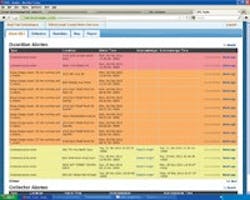Always on Guard
In 1979, the Hillsborough County Public Utilities Department in Florida adopted a plan to reduce potential health hazards from septic tanks in two of its residential areas: Ruskin and Wimauma. The utility was proactive in dealing with aging septic tank systems.
The Switch to Low Pressure
In 2010, the Florida legislature passed a law requiring that sep- tic tanks be inspected every five years and that they be maintained according to standards. A study by the Florida Department of Health noted that more than 2.6 million homes in Florida depend on septic tanks, and many of these tanks are more than 30 years old. Unfortunately, septic tanks contaminate Florida’s springs and other sources. This mirrors a national concern that aging septic tanks release nitrogen and other contaminants into groundwater.
As is the case with many utilities, Hillsborough County needed to modernize, yet keep within budget constraints. Working with U.S. Environmental Protection Agency grants, the utility gradually has been replacing septic tanks with a low-pressure sewer system (LPSS). Three decades after its initial push, the utility is nearing its goal to provide a safe LPSS for residents in all neighborhoods.
As with any LPSS, raw wastewater from each business or residence is collected in a pump basin, where the transmission of the wastewater and any solids begins. In the case of Wimauma and Ruskin, there are 1,100 such units.
Though converting to a LPSS brought needed service to Wimauma and Ruskin, the number of sanitary sewer overflows (SSOs) increased. These were a result of heavy rain and floods, and they were complicated by inadequate communication and data collection. The utility needed a cost-effective, efficient way to gather current and historical information and note trends.
“We wanted to be notified of potential overflows somehow,” said Jon Johanson, project manager. “Many of the area’s residents didn’t know what to do when alarms occurred near their homes. We needed a better handle on communication so that we could prevent future SSOs.”
Robert Knight, supervisor of field maintenance services and manager of the LPSS operations, agreed. “In the past year, we’ve been hammered with storms, with a lot of water going into the ground. We were looking for a way to stop the high number of SSOs.”
According to Johanson, the utility first turned to a SCADA company to implement a solution using individual monitors on each pump, along with collector units. The information was to be transmitted from the monitors to the collectors to the utility via cellular technology.
In May 2010, the SCADA company installed a 19-unit pilot program. Unfortunately, the technology for transmitting data from the individual units to the collectors failed, and the pilot program was aborted.
To the Rescue
It was then that Hillsborough contacted High Tide Technologies LLC via High Tide distributor Water Resource Technologies of Jacksonville, Fla. The Grinder Pump Guardian offered the SCADA technology that Hillsborough County sought.
The company provides both cellular and satellite technology. The utility decided to initiate a 30-day trial of its satellite-based solution. The system includes the company’s proprietary Grinder Pump Guardians (individual grinder monitors), collectors, servers and Orbcomm’s low-Earth orbit satellite system to collect and transmit data. The solution provides the utility with wireless monitoring of all assets—including remote ones—as well as desired alarm notifications.
The solution was implemented by placing a wireless monitor at each grinder pump. The monitors transmit data through neighborhood collectors, which, in turn, communicate with High Tide’s servers via satellite. Because each monitor functions as a radio repeater, it does not matter if individual pump stations are far from the collector module.
It also can be noted that the solution is highly scalable. It can be installed one point at a time, or it can be deployed quickly over a large number of assets.
Utility-designated personnel receive access to a secure Web interface on High Tide’s servers. They can access this page from any Internet-connected computer anywhere, anytime. On the secure Web page, they can view current and historical data. They also can see notifications, such as high water alerts and excessive starts and runtimes. Personnel can input service history and manage alarms through the server.
Additionally, personnel are notified via text, phone call or page of any alarms or warnings. Units in alarm are identified by name and street address. A mapping feature on the Web page guides utility personnel to units in stress or alarm. A support employee is available to answer questions day or night.
The pilot program was installed in December 2010. Later, Hillsborough County named High Tide Technologies its sole provider. In April 2011, the utility ordered 530 Guardians and seven collectors. By July 2011, all 550 units and the collectors were installed. Eventually, the utility plans to finish the system by adding 650 more units.
The solution helped the utility prevent damage to its LPSS during recent floods. During one storm, 7 in. of rain fell rapidly across the area, and the system notified utility personnel that some pumps were experiencing excessive run times. The utility used this information to change its installations to prevent inflow and infiltration. For example, it sealed the grinder basins to prevent leaks into the system, thus saving the utility’s grinder pumps from running too long and overheating.
In today’s economic climate, utilities like Hillsborough County must balance three factors: cost, public safety and environmental concerns. Scalable solutions fit easily within most utility budgets, helping utilities reduce man-hours, modernize older systems, protect equipment and manage operations.
Download: Here
